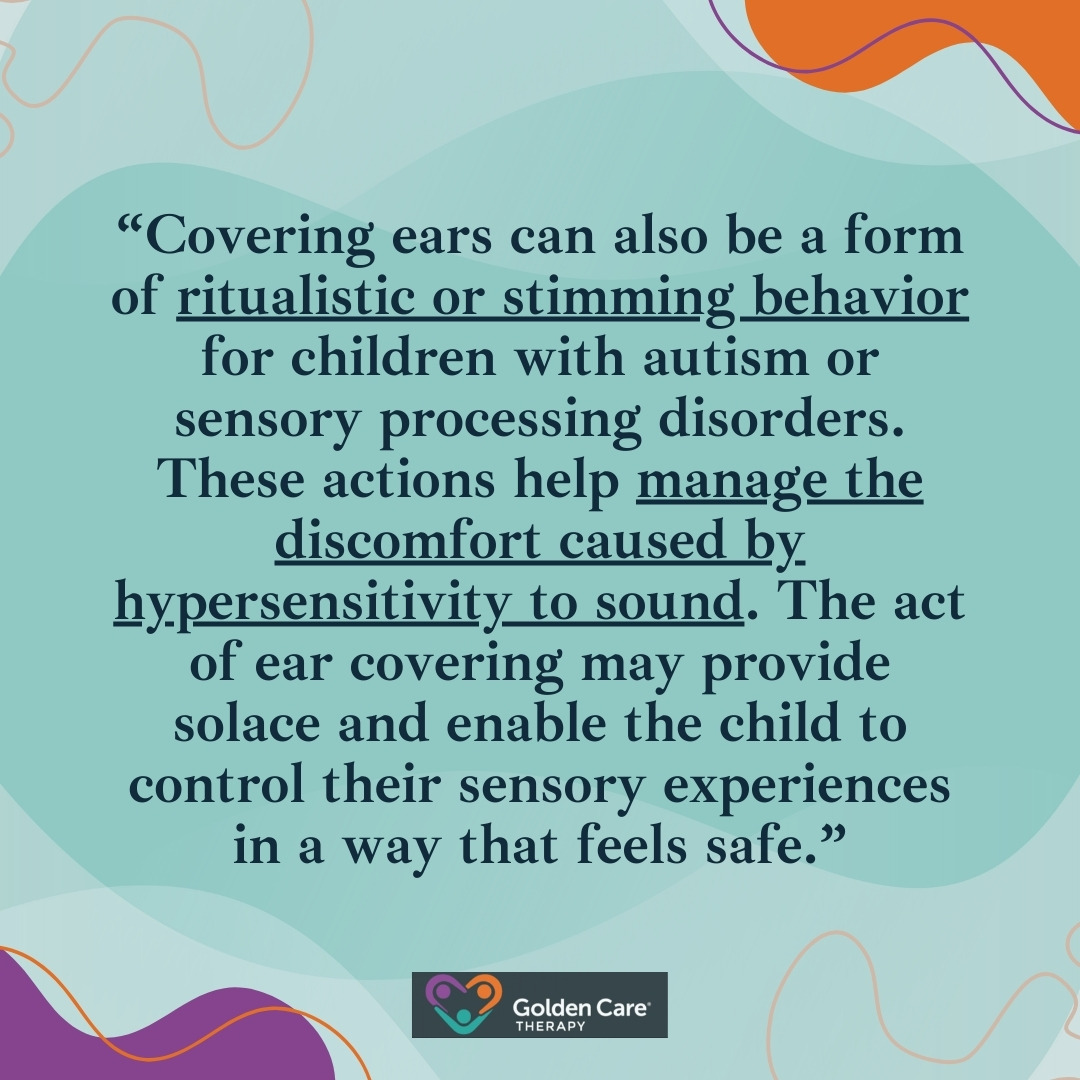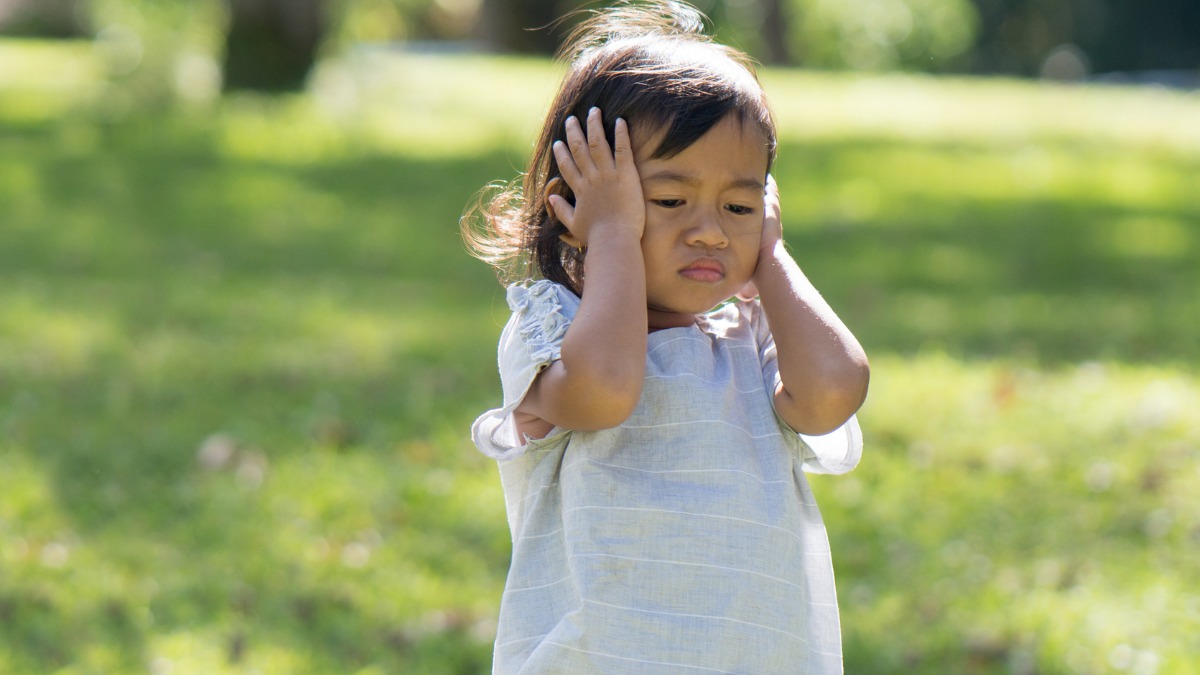Loud noises, bustling crowds, or even the hum of a refrigerator can feel overwhelming to some autistic children. One moment, everything seems fine, and the next, they’re covering their ears, shutting out a world that suddenly feels too loud. It’s not just about volume — certain sounds can be sharp, unpredictable, or even painful, sometimes leading to a shutdown where they withdraw to cope with the sensory overload.
But why does this happen? What makes everyday noises so distressing? Understanding the reasons behind this reaction can help create a more comfortable and supportive environment for autistic children.
Why Do Autistic Children Cover Their Ears?
Autistic children often cover their ears as a response to sensory overload, particularly from loud or unpredictable sounds.
Many autistic individuals experience hypersensitivity to noise, meaning that everyday sounds can feel unbearably loud or distressing. Covering their ears is a natural way to block out overwhelming auditory input and regain a sense of control over their environment.
This reaction is not necessarily a sign of pain but rather an attempt to self-regulate and reduce anxiety in overstimulating situations.
In addition to noise sensitivity, ear-covering can also be a way to cope with stress, anxiety, or sudden changes. Unexpected sounds can be jarring, making a child feel unsafe or anxious, and covering their ears may serve as a protective mechanism.
Some autistic children also use this behavior to signal discomfort when they cannot easily express their feelings through words.
Discomfort and Pain Relief
Covering their ears can also serve as a means of achieving discomfort or pain relief. Autistic children may experience physical discomfort in response to certain sounds, which can lead to meltdowns or emotional outbursts. By covering their ears, they can mitigate this discomfort and self-regulate in stressful situations.
This behavior is often a key indicator of a child’s need for support when sensory inputs become overwhelming.
Recognizing the varied motivations behind ear covering is vital for providing appropriate support. Strategies such as creating safe environments, using noise-canceling headphones, and offering visual aids can help manage sensory sensitivities effectively.

3 Triggers for Ear Covering
Understanding the triggers for ear covering can help parents and caregivers better support autistic children in managing sensory overload. Several factors may lead a child to cover their ears.
Let’s look at each of them.
Loud and Invasive Sounds
Noise sensitivity is common among individuals with autism. Distressing and loud sounds can overwhelm them, prompting the need to cover their ears as a means of blocking out these noises. Common examples include fire alarms, construction noises, and shouting or screaming.
Crowded Spaces
Crowded environments often present multiple sensory inputs, not just auditory. Factors such as hand dryers in public restrooms and announcements on public transportation can trigger ear-covering behaviors in autistic children.
These situations become increasingly challenging due to the combination of sounds and the presence of many people. Ear covering can emerge as a response to:
Hypersensitivity to Frequencies
Children with autism may also cover their ears to filter out specific frequencies that are too loud or invasive. They might react to sounds that fall outside the typical hearing range, leading to an uncomfortable experience. This hypersensitivity can lead to the need for ear covering as a form of comfort or self-soothing.
Common situations include whistles or certain electronic devices, bass sounds from music or machinery, and sirens or animal sounds.
Recognizing these triggers is important for understanding why autistic children may cover their ears and allows for better strategies to create supportive environments.
Ear Covering in Different Environments
Understanding the reasons autistic children cover their ears involves examining the challenges they face in various environments, the role of ritualistic and stimming behaviors, and the vital support provided by parents and caregivers.
In public settings, autistic children may cover their ears as a response to overwhelming sensory inputs. These inputs can include loud noises, sudden announcements, or the chaotic environment typical of crowded places.
Common triggers can lead to meltdowns, which can prompt the need for self-regulation.
Parents may observe ear covering as a signal that their child is experiencing a build-up of tension or anxiety. Recognizing these signs can help caregivers address the underlying sensory overload effectively.

Role of Parents and Caregivers
Parents and caregivers play a crucial role in supporting autistic children coping with sensory overload. When children cover their ears, it can serve as a method to create a sense of silence and refuge amidst sensory chaos. This behavior allows children to self-soothe and regain control when they feel overwhelmed.
Parents can identify ear covering as a functional strategy to help their children navigate sensory-rich environments.
Caregivers need to understand the significance of ear covering, as it can help them provide comfort and reassurance in these moments of distress. At Golden Care Therapy, we offer compassionate and personalized ABA therapy to support individuals with sensory sensitivities.
Our skilled ABA therapists in Indiana, New Jersey, New York, Georgia, and Florida use evidence-based strategies to help children navigate overwhelming situations with confidence. Reach out to us today to learn how we can make a difference for your family!
Sources:



